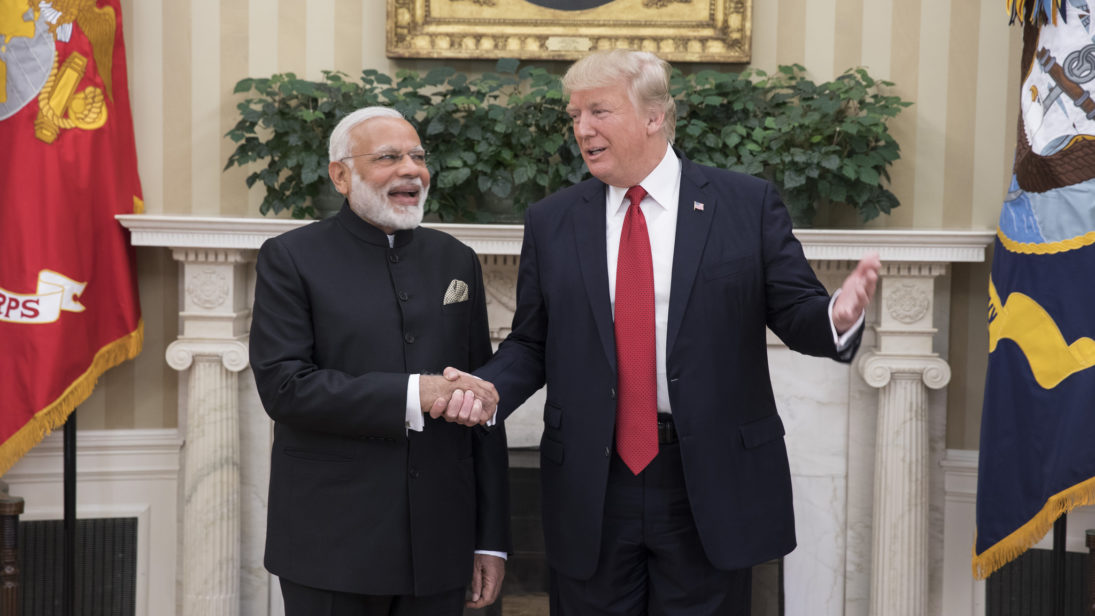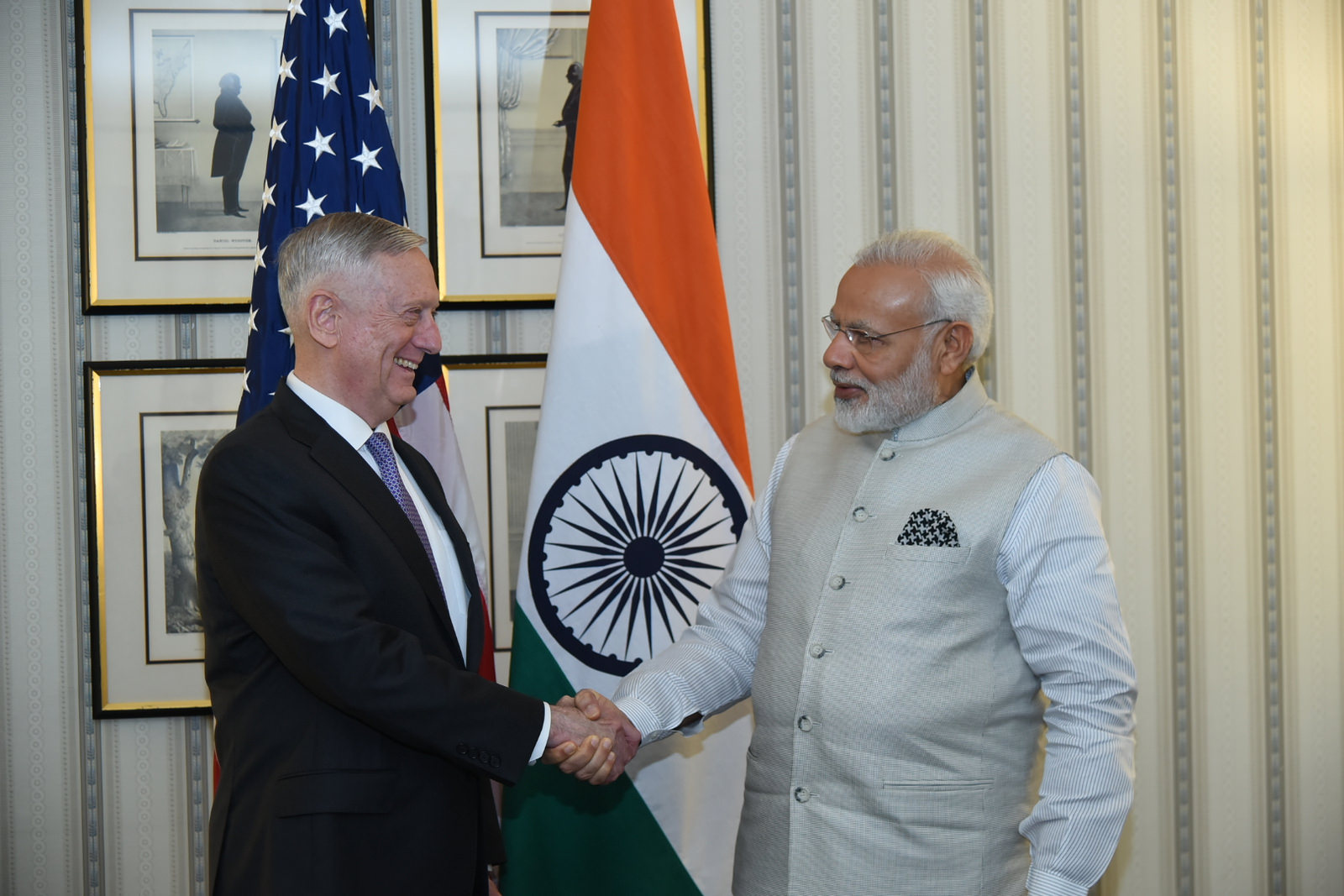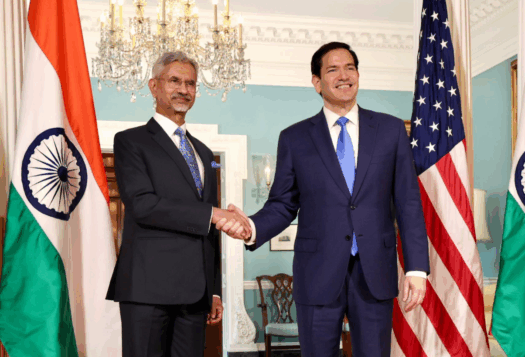
The Indo-Pacific region has increasingly become a focal point for diplomatic and security cooperation between the United States and India. In recent months, both countries have reiterated the strategic importance of the Indo-Pacific in diplomatic encounters such as Indian Prime Minister Narendra Modi’s meeting with U.S. Secretary of Defense James Mattis. The Indo-Pacific’s importance is also seen in military exercises, such as the annual India-Japan-United States Malabar exercises and the participation of the “Quad” countries (Australia, India, Japan, and the United States) in the Rim of the Pacific naval exercises.
Despite these positive developments, however, major challenges remain as India and the United States look to deepen their security cooperation in the Indo-Pacific, both bilaterally and under the umbrella of the Quad. These challenges include a lack of interoperability between the navies of both countries and divergent strategic interests in the Indo-Pacific. Though the now-postponed 2+2 ministerial dialogue would have been an opportunity for both countries to bridge the gap on these issues, both countries should address these challenges sooner rather than later.
Lack of Interoperability
The United States and India have conducted annual bilateral naval drills since 1992, and recent years have seen growing military cooperation between them. However, interoperability problems and India’s long-standing mistrust of the United States stand as obstacles to deepening security ties.
As the United States and India continue to enhance their cooperation, both countries will need to move towards common defense platforms, particularly for weapons, electronics, and data. However, Russia has historically been India’s largest arms supplier, and Russian weapons systems are largely incompatible with U.S. systems. Moreover, India has so far been reluctant to participate in data exchanges or provide access to its military communications systems. Indeed, although India has signed a logistics support agreement with the United States, other so-called “foundational agreements” to facilitate the transfer of secure communications equipment and geospatial data remain unsigned due to India’s reservations.
As the United States and India continue to enhance their cooperation, both countries will need to move towards common defense platforms, particularly for weapons, electronics, and data. However, Russia has historically been India’s largest arms supplier, and Russian weapons systems are largely incompatible with U.S. systems. Moreover, India has so far been reluctant to participate in data exchanges or provide access to its military communications systems.
Lack of progress on these agreements means that bilateral naval exercises involving the United States and India continue to be conducted “through voice and text commands with rudimentary SMS-style data exchange.” This lack of interoperability negatively impacts collaboration under the Quad. While the “military structures, systems, norms, and experiences” of the United States, Japan, and Australia have been “largely aligned” since World War II, India continues to remain an outlier. Not only is India’s Russian equipment foreign to the other three members of the Quad, who all use U.S.-designed systems, India’s misalignment with such “military structures, systems, norms and experiences” due to its lack of interoperability presents a significant obstacle for ongoing and future collaboration.

Divergent Strategic Interests
In addition to interoperability challenges, India and the United States have also expressed divergent strategic interests for the Indo-Pacific region. India has suggested that its key focus in the Indo-Pacific may not be working with the United States or the Quad, but rather increasing its engagement with the Association of Southeast Asian Nations (ASEAN). In contrast, while the United States has recognized ASEAN’s importance, it has emphasized India’s importance in its own Indo-Pacific strategy.
In his address at this year’s Shangri-La Dialogue, Prime Minister Modi stated that ASEAN “has laid the foundation of the Indo-Pacific Region” and that “ASEAN centrality and unity … lie at the heart of the new Indo-Pacific.” He went on to mention that “India does not see the Indo-Pacific Region as a strategy or as a club of limited members.” Indeed, the Indian Ministry of External Affairs’ press release after the meeting of the Quad in November 2017 specifically outlined that India saw its Act East policy, which is centered on deepening cooperation with ASEAN, “as the cornerstone of its engagement in the Indo-Pacific region.”
India has suggested that its key focus in the Indo-Pacific may not be working with the United States or the Quad, but rather increasing its engagement with the Association of Southeast Asian Nations (ASEAN). In contrast, while the United States has recognized ASEAN’s importance, it has emphasized India’s importance in its own Indo-Pacific strategy.
In contrast to Indian statements, the United States has repeatedly expressed a desire for India to function as its partner in the Indo-Pacific. In his first public address, former U.S. Secretary of State Rex Tillerson argued that the United States and India should serve “as the port and starboard lights” of the Indo-Pacific. Meanwhile, U.S. Secretary of Defense James Mattis underscored India’s regional importance in his speech at the Shangri-La Dialogue. In his address, he noted “India’s role as a leader and responsible steward in the Indo-Pacific region” and reiterated the United States’ commitment to stand “shoulder to shoulder with India, ASEAN and our treaty allies … to build an Indo-Pacific where sovereignty and territorial integrity are safeguarded.”
Even India’s statements following the resuscitation of the Quad hint at its divergent interests. In the Ministry of External Affairs’ press release after consultations with the Quad in Manila in November 2017, India made no reference to the renewed “quadrilateral,” despite mentions of the same in U.S. and Australian statements. Moreover, in press releases after consultations in both November 2017 and June 2018, India did not reference “freedom of navigation and overflight,” or “international law,” which were included in releases by the other three countries, and which India has articulated support for in other fora.
Therefore, interoperability issues and divergent interests continue to present challenges to the United States and India as they look to deepen cooperation in the Indo-Pacific. However, due to the immense importance of this geostrategic region to both countries, the United States and India should act swiftly and decisively to overcome these strategic differences and work towards a shared vision for the Indo-Pacific, beginning with a rescheduled 2+2 dialogue.
***
Image 1: MEAphotogallery via Flickr
Image 2: MEAphotogallery via Flickr


